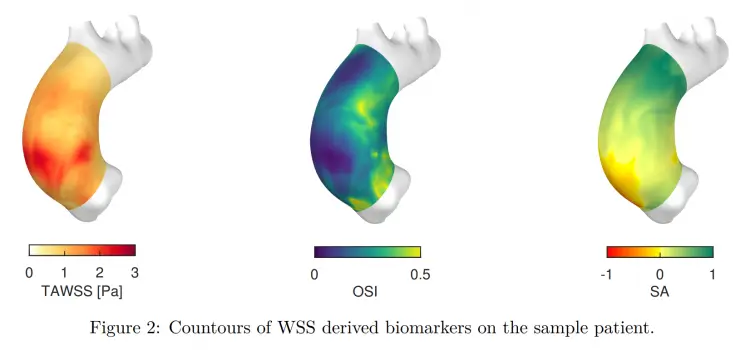We are excited to share a very interesting thesis by Antonio Martinez presented at the University of Rome Tor Vergata and titled “Computational Methods for the Analysis of Ascending Aortic Aneurysms”.
Antonio’s work presents a series of advanced computational solutions to assess both the hemodynamic and structural conditions of ascending thoracic aneurysms using RBF Morph software. Here’s a brief overview of his significant contributions:
- Hemodynamic Flow Modelling: Antonio analysed the optimal computational strategies, focusing on how different turbulence and viscosity models impact WSS biomarkers. This is crucial for accurate hemodynamic assessments.
- CFD Biomarkers & Aneurysm Growth: He explored the correlations between CFD-derived biomarkers and aneurysm growth rates, providing valuable insights for predicting aneurysm progression.
- High-Fidelity FSI Aorta Models: Antonio developed a comprehensive workflow for creating high-fidelity fluid-structure interaction (FSI) aorta models, offering a more complete understanding of aneurysm conditions by integrating structural analysis.
This research not only advances our understanding of aortic aneurysms but also sets a new standard for using computational methods in medical research.
You can read the presentation and the full thesis.



